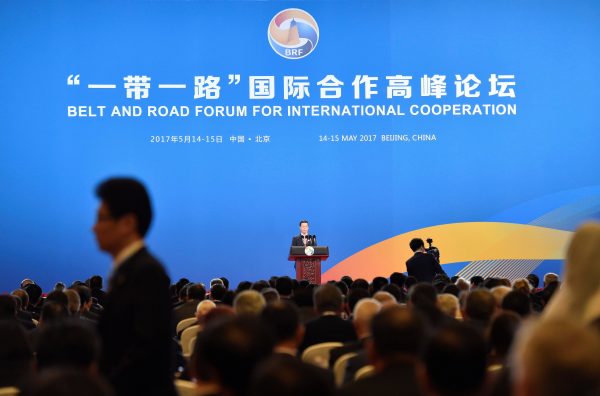The economic case for supporting the AIIB was always overwhelming. But under pressure from the United States, then prime minister Tony Abbott initially rejected China’s invitation. In explaining his stance, the former prime minister echoed US claims that the AIIB wasn’t truly a multilateral institution and that its governance standards would be lacking.
Critics responded that if these really were the concerns, then the logical approach was to join and actively participate to ensure that expectations around governance were met, thereby guaranteeing the bank be more multilateral.
When the UK signed up in March 2015, along with other European countries such as France, Germany and Italy, Australia’s position on the outer became increasingly difficult to justify. The following month the Australian government announced that it was also on board.
Like the AIIB, the BRI also has a clear economic rationale.
Over the last two decades tariff rates in the Asia Pacific region have fallen dramatically, promoting huge flows of mutually beneficial trade. But other trade costs, such as those associated with transporting goods from one place to another, are much higher than tariffs and exhibit no declining trend. The BRI addresses this problem by improving connectivity between and within countries.
In February 2016 at a joint press conference in Beijing, China’s Foreign Minister Wang Yi said that Australia and China had established a working group to ‘pair up’ China’s BRI with the Australian government’s Developing Northern Australia initiative. It was also reported that the two countries had been in talks since last October to align the initiatives.
But in March 2017, just before Chinese Premier Li Keqiang was due to arrive in Australia, the Australian government made it known that it would not be proceeding with any formal association at that time. US pressure was once again likely to have been a factor.
In February 2017 at a joint press conference in Canberra, Australia’s Foreign Minister Julie Bishop explained that Australia and China had both agreed that there was a need for greater infrastructure in the region — a focal point for both the BRI and the Developing Northern Australia plan. Bishop added that addressing this need required greater commitment to the principles of transparency, private sector engagement and strong development outcomes.
Yet as with the AIIB, the most obvious response to Australia’s concerns around the BRI is to engage with China to overcome them.
In May 2017 Shadow Minister for Foreign Affairs Penny Wong advocated such a proactive approach. It was also the approach taken by the New Zealand government in March. Immediately after leaving Sydney and touching down in Wellington, Premier Li stood alongside New Zealand Prime Minister Bill English and oversaw the signing of a memorandum of understanding (MOU) on BRI cooperation. This included a section on ‘cooperation principles’, which specifically mentioned ‘international good practice, market orientation and professional principles’.
The Australian government could have negotiated a similar MOU that listed the principles it valued most highly, helping to gain China’s commitment to those principles in the process. Instead, an opportunity was missed.
In the end, Australian participation in the BRI might be driven by pressure from state governments. While the Developing Northern Australia initiative is a federal one, many key decisions relating to it such as project development approvals are the prerogative of the governments of Western Australia, Northern Territory and Queensland.
The Northern Territory government positioned its 2015 decision to lease the Port of Darwin to a Chinese company in terms of securing its ‘place on China’s “Maritime Silk Road” trade route’. Likewise last year, Queensland’s Deputy Premier and Minister for Trade and Investment Jackie Trad was in China exploring ‘investment opportunities arising from China’s “One Belt, One Road” initiative and the Palaszczuk’s government’s North Queensland development priorities’.
State governments in Australia keen on more trade and investment dollars have a history of lobbying the federal government for greater engagement with China. In 2015, when federal Labor party leader Bill Shorten was resisting the enactment of the China–Australia Free Trade Agreement, he was left appearing isolated as Labor leaders in New South Wales, Victoria and South Australia all came out in strong support of the deal.
Last month, former director of the China Studies Centre at the University of Sydney Kerry Brown pointed out that a key misunderstanding about the BRI is the notion that it is prescriptive in nature. The BRI is more accurately conceived as an opportunity for other countries to answer the question of what they want from China and how they would like to engage with it. Australian governments at all levels would do well to respond to that invitation.
James Laurenceson is the Deputy Director of the Australia China Relations Institute (ACRI) at the University of Technology, Sydney.


Sometimes state governments are not saddled with larger geopolitical concerns and pressures in their decision making. Is Australia a federal system like the USA where states can have some autonomy to engage in practices which might go outside of national policy making because these serve the state’s interests? This happens here in the USA where California, and other states, have more stringent environmental regulations or plans to reduce fossil fuel use than is required on a federal level.